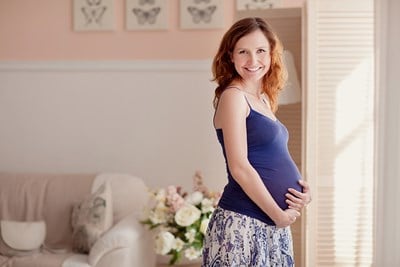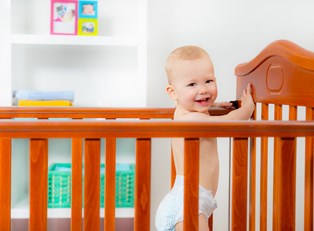Admittedly, your newborn won’t be doing much getting-into-things for the first few months, but all the same, it’s better to be prepared sooner than later. As long as you have a crib, a form of newborn-appropriate milk, and some diapers, Baby will survive. Even more important than making sure you have essentials is making sure you have dangerous things out of reach. Newborn safety stretches from a safe spot for your little one to sleep to having baby sunscreen when you’re out and about. Here’s a look at some top priorities for your little one.
Sound Sleeping
Having a safe place for sleeping is one of the most crucial elements of preparing for a newborn -- not to mention a safe place if the crying gets out of control and you need a break. To reduce the risk of Sudden Infant Death Syndrome, lessen the number of items in your crib or bassinet and use a light, well-swaddled blanket. Pillows, heavy quilts, stuffed animals, and even bumpers can be dangerous.
First Aid Necessities
Although it is important to talk to your pediatrician before administering any medication (even over the counter medications like Tylenol or Benadryl), you can gather a few essentials that are more than likely to come in handy. Some items include baby nail clippers, a thermometer (rectal is the most accurate for newborns), nasal aspirator, saline nasal drops, diaper rash cream, and infant sunscreen.
Crawling Hazards
You’ll have a little time before your baby is mobile enough to get in real trouble roaming the house. But you also shouldn’t expect to have a significant amount of time to yourself for baby-proofing your house between delivery and the crawling mark. If you have a flight of stairs or want to limit your little one’s ability to get to other rooms, baby gates are essential. Remember to block both the top and bottom of stairs.
You can buy foam edging for sharp corners, plastic plugs for electric outlets, and install a variety of different clips that make it difficult to open cabinet doors and drawers. Make sure cords are placed out of the reach of small hands and mouths. If you have dangling curtain strings, loop them up to prevent strangling hazards.
Swallowing Hazards
Babies love putting things in their mouths -- and don’t expect that to go away for at least a year. This means moving any cleaning products, medications, and any other potentially hazardous products you keep on low shelves up above the three-foot mark. Even if you baby proof your cabinet doors, some kids have been known to crack the code, so don’t risk it with the dangerous stuff.
Additionally, make sure any breakable objects or products with small pieces (such as figurines, picture frames, older kids small toys, dice or marbles, etc. are out of arm’s reach).
Baby-Proofing Standards
As Baby gets older, you’ll notice more and more things for her to get into -- so will she. Consider enlisting a toilet lid latch to prevent dabbling in potty water or dropping toys in or doorknob covers to make it difficult for small hands to work. Second-hand products can be great, but older models can also have loose pieces or safety recalls (check for recalls at U.S. Consumer Product Information Safety Commission).
Double check smoke and carbon monoxide detectors. Get a lid for your trash can or put it in a cupboard. Make sure furniture is secure and won’t fall over if your little one uses it as a jungle gym (or just to help stand up). If you live in a home built before 1978, check for lead paint; repair or replace any walls or furniture with flaking or peeling paint or paper. Remember that no matter how baby proofed your house is, your kiddo is probably going to find something to get into, so it’s still important to maintain supervision.



